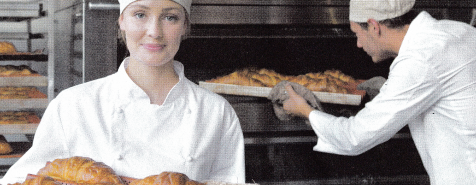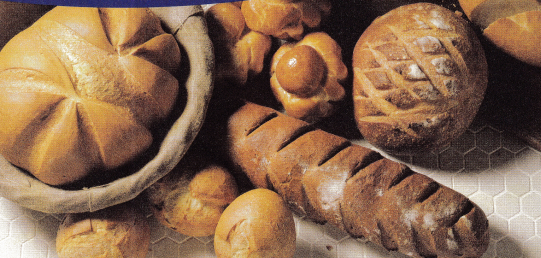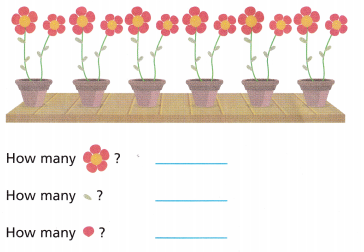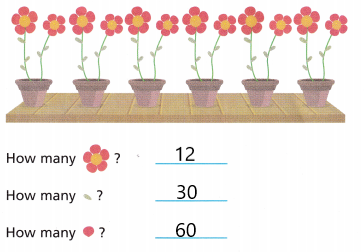We included HMH Into Math Grade 3 Answer Key PDF Module 1 Understand Multiplication to make students experts in learning maths.
HMH Into Math Grade 3 Module 1 Answer Key Understand Multiplication

Baker
Bakers are responsible for making breads, cakes, and other baked goods. They use tools to measure and mix ingredients in specific amounts and a concentrated heat source, such as an oven, to bake their products.
What do you know about bakers?
Did you know that there is some form of baking in almost every culture in the world?
You may have heard the term a baker’s dozen. A baker’s dozen is 13 baked items instead of 12. Here’s why: In order to avoid a fine if their loaves of bread were under a certain weight, bakers would add an extra loaf to every dozen.
Stem Task:
A baker has five trays of biscuits. There are 15 biscuits in all. Trays A and B have a total of 8 biscuits. Trays B and C have a total of 4 biscuits. Trays C and D have a total of 3 biscuits, and trays D and E have a total of 6 biscuits. How many biscuits are on each tray? Come up with a plan to solve this puzzle.
Learning Mindset
Challenge-Seeking Defines Own Challenges

What challenges do you have for yourself? For example, you may have seen a cooking competition on TV and decided to challenge yourself to learn to cook. At first it may seem difficult because it involves measuring ingredients, doing things in a certain order, and timing of the various parts. Over time you will learn strategies and acquire skills that make any challenge easier.
Reflect
Question.
What was challenging about the STEM Task?
Answer:
The challenging task is to make biscuits and place them on a tray according to the given data. The task is to find the number of biscuits on each tray.
Question.
What tool or strategy did you use to address that challenge? Did you make a model?
Answer:
The strategy is to multiply the number of biscuits on each tray.
Question.
Do you enjoy solving challenging puzzles? What types of learning challenges are most interesting to you?
Answer:
Puzzles get you thinking and learning in new ways. They force you to challenge the idea that there’s only one way of doing things, and they train you to explore a range of options.
Can you find the total without counting by Ones?
Record the total.

Answer:

Explanation:
There are 2 flowers in each flower pot, there are 6 flower pots
2 x 6 = 12 flowers
There are 5 leaves in each pot
5 x 6 = 30 leaves
There are 5 petals for each flower, there are 2 flowers in each pot, there are 6 pots
5 x 2 x 6 = 10 x 6 = 60 petals.
Turn and Talk
- How did you find the total for each question?
- Describe a different strategy you could use to find the answers.
Are You Ready?
Complete these problems to review prior concepts and skills you will need for this module.
Count On to Add
Count on to add. Find the sum.

Question 1.
7 + 2 = ___
Answer:

Explanation:
I started at 7
Counted 2 more
I reach at 9
So, 7 + 2 = 9.
Question 2.
8 + 4 = ___
Answer:

Explanation:
I started at 8
Counted 4 more
I reach at 12
So, 8 + 4 = 12.
Question 3.
6 + 1 = _____
Answer:

Explanation:
I started at 6
Counted 1 more
I reach at 7
So, 6 + 1 = 7.
Count by Fives and Tens
Count by fives or tens. Write the numbers.
Question 4.

Answer:

Explanation:
I counted by 5’s
The numbers are 5, 10, 15, 20, 25, 30, 35.
Question 5.

Answer:

Explanation:
I counted by 10’s
The numbers are 10, 20, 30, 40.
Array Models
Find the number of rows and the number of objects in each row. Complete the addition equation to find the total.
Question 6.

___ rows of ___ squares
___ + ___ = ____
Answer:
12
Explanation:
2 rows of 6 squares
6 + 6 = 12
There are 12 squares in all.
Question 7.

___ rows of ___ squares
___ + ___ = ____
Answer:
15
Explanation:
3 rows of 5 squares
5 + 5 + 5
= 10 + 5
= 15
There are 15 squares.